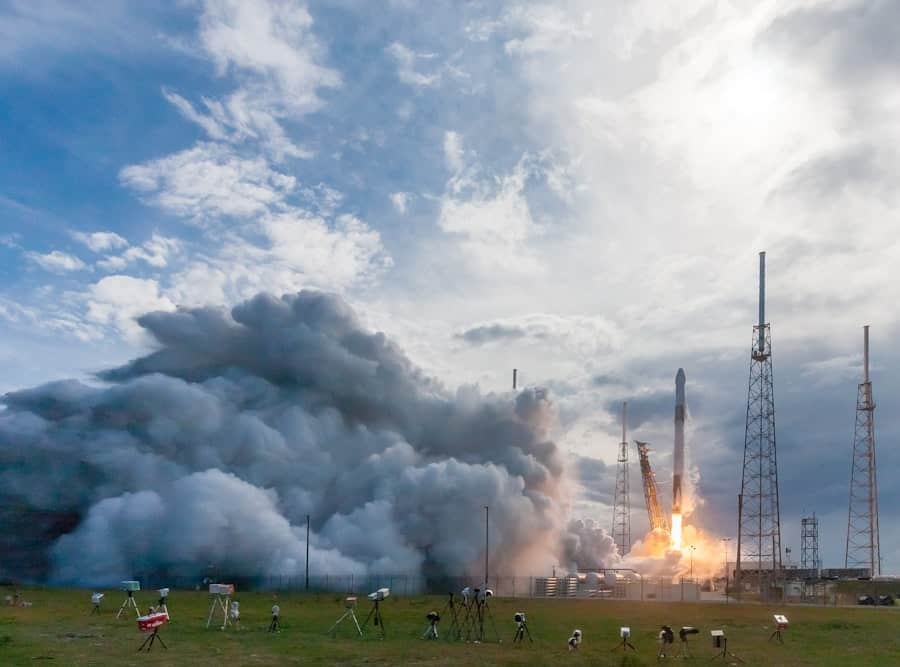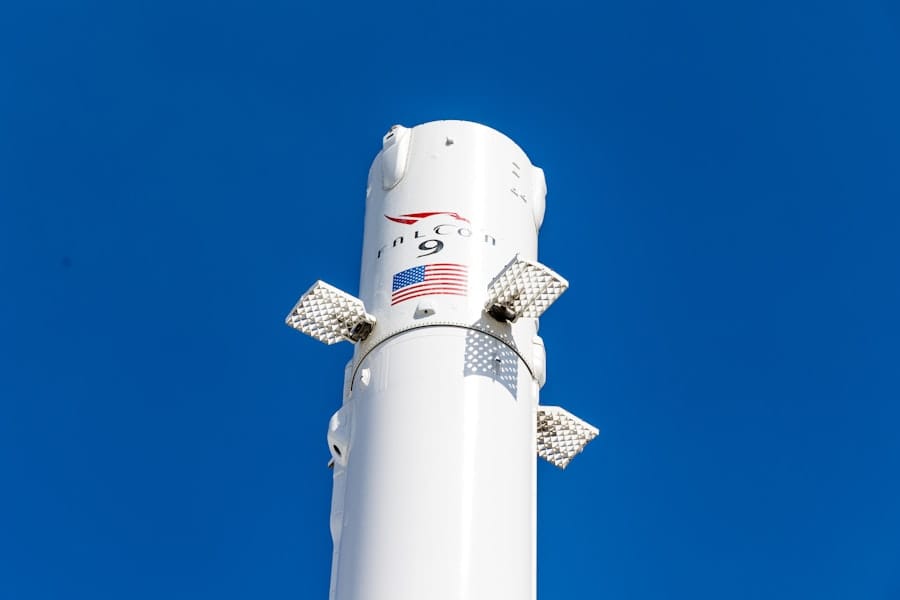The dawn of the 21st century marked a significant turning point in the realm of space exploration, characterized by the emergence of commercial entities that began to challenge the long-standing dominance of government space agencies. Historically, space exploration was primarily the domain of national governments, with agencies like NASA, ESA, and Roscosmos leading the charge. However, as technology advanced and the costs associated with launching payloads into orbit decreased, private companies began to see the potential for profit in space.
This shift was fueled by a combination of factors, including advancements in rocket technology, a growing interest in satellite communications, and the burgeoning field of space tourism. The rise of commercial space exploration has been propelled by visionary entrepreneurs who recognized the untapped potential of space as a new frontier for business. Companies like SpaceX, Blue Origin, and Virgin Galactic have emerged as key players, each with their unique approach to harnessing space for commercial purposes.
The competitive landscape has not only spurred innovation but has also led to a diversification of services offered in the space sector. From satellite deployment to crewed missions and even plans for lunar tourism, the commercial space industry is rapidly evolving, creating a dynamic environment that promises to reshape our understanding of what is possible beyond Earth’s atmosphere.
Key Takeaways
- Commercial space exploration is on the rise, with private companies like SpaceX leading the way in shaping the future of space exploration.
- SpaceX has played a significant role in shaping the future of space exploration through its innovative technologies and ambitious missions.
- SpaceX’s commercial missions have had a significant impact on space technology, driving advancements in reusable rocket technology and satellite deployment.
- The expansion of commercial opportunities in space has been fueled by SpaceX’s success, opening up new possibilities for private companies to participate in space exploration.
- SpaceX’s commercial missions have influenced international collaboration in space exploration, leading to partnerships and joint missions with other countries and organizations.
SpaceX’s Role in Shaping the Future of Space Exploration
SpaceX, founded by Elon Musk in 2002, has been at the forefront of the commercial space revolution. The company’s ambitious mission to reduce the cost of space travel and make it accessible to a broader audience has fundamentally altered the landscape of space exploration. One of SpaceX’s most significant achievements is the development of the Falcon 1, Falcon 9, and Falcon Heavy rockets, which have demonstrated remarkable reliability and cost-effectiveness.
The successful launch and recovery of the Falcon 9’s first stage have set new standards for reusability in rocketry, allowing for significant reductions in launch costs and paving the way for more frequent missions. Moreover, SpaceX’s Crew Dragon spacecraft has redefined human spaceflight by enabling NASA to resume crewed missions from U.S. soil after nearly a decade of reliance on Russian Soyuz spacecraft.
This partnership not only highlights SpaceX’s capabilities but also underscores its role as a critical player in international space endeavors. The successful transport of astronauts to the International Space Station (ISS) has established SpaceX as a trusted partner for government agencies and has opened doors for future collaborations in deep space exploration, including missions to Mars.
The Impact of SpaceX’s Commercial Missions on Space Technology

The technological advancements driven by SpaceX’s commercial missions have had far-reaching implications for the entire aerospace industry. One of the most notable innovations is the development of reusable rocket technology.
This breakthrough has not only made space more accessible but has also prompted other companies and agencies to invest in similar technologies, fostering a culture of innovation across the sector. Additionally, SpaceX’s focus on rapid iteration and agile development processes has influenced how aerospace projects are managed. The company’s approach emphasizes speed and efficiency, allowing for quicker testing and deployment of new technologies.
For instance, the Starship program aims to create a fully reusable spacecraft capable of carrying humans to Mars and beyond. The iterative design process employed by SpaceX has led to rapid prototyping and testing, resulting in advancements that could redefine interplanetary travel. This emphasis on innovation is inspiring other companies to adopt similar methodologies, ultimately accelerating technological progress in space exploration.
The Expansion of Commercial Opportunities in Space
As commercial space exploration gains momentum, a plethora of opportunities is emerging for businesses looking to capitalize on this new frontier. The satellite industry is one of the most prominent sectors benefiting from this expansion. Companies are increasingly investing in small satellite technology for applications ranging from Earth observation to global internet coverage.
The advent of mega-constellations like SpaceX’s Starlink aims to provide high-speed internet access worldwide, particularly in underserved regions. This initiative not only represents a significant business opportunity but also addresses critical global connectivity challenges. Moreover, the potential for space tourism is becoming more tangible as companies like Virgin Galactic and Blue Origin prepare to offer suborbital flights to paying customers.
This burgeoning market is expected to attract adventure-seekers and affluent individuals eager to experience weightlessness and view Earth from above. As safety protocols are established and public interest grows, the commercial viability of space tourism could lead to an entirely new industry that complements existing sectors such as hospitality and entertainment.
The Influence of SpaceX’s Commercial Missions on International Collaboration
SpaceX’s commercial missions have fostered an environment conducive to international collaboration in space exploration. By providing reliable launch services at competitive prices, SpaceX has attracted clients from various countries and organizations that may not have had access to such capabilities otherwise. For instance, numerous international satellites have been launched aboard Falcon 9 rockets, enabling countries to enhance their communication infrastructure and scientific research capabilities without incurring exorbitant costs.
Furthermore, SpaceX’s partnership with NASA exemplifies how commercial entities can work alongside government agencies to achieve common goals. The Commercial Crew Program is a prime example of this collaboration, where SpaceX was selected to develop a spacecraft capable of transporting astronauts to the ISS. This partnership not only strengthens ties between private industry and government but also encourages other nations to explore similar collaborations with commercial entities.
As countries recognize the benefits of leveraging private sector expertise, we may witness an increase in joint missions and shared resources aimed at exploring deeper into our solar system.
The Economic and Business Implications of SpaceX’s Commercial Missions

The economic implications of SpaceX’s commercial missions extend beyond just the aerospace sector; they ripple through various industries and contribute significantly to job creation and technological advancement. By reducing launch costs through innovative practices such as reusability, SpaceX has made it economically feasible for startups and established companies alike to invest in satellite technology and other space-related ventures. This democratization of access to space has led to an influx of investment in the sector, stimulating economic growth and fostering innovation.
Moreover, as SpaceX continues to expand its operations—such as plans for lunar missions under NASA’s Artemis program—the potential for new markets emerges. Industries related to logistics, manufacturing, and even tourism are likely to see growth as more entities seek to establish a presence in space. The prospect of mining asteroids or establishing lunar bases could create entirely new economic ecosystems that capitalize on resources beyond Earth.
As these opportunities materialize, they will not only transform our understanding of commerce but also challenge existing regulatory frameworks that govern activities in outer space.
The Ethical and Regulatory Considerations of Commercial Space Exploration
As commercial space exploration accelerates, ethical and regulatory considerations become increasingly important. The rapid expansion of private companies into space raises questions about ownership rights over celestial bodies and resources. The Outer Space Treaty of 1967 established that no nation can claim sovereignty over outer space or celestial bodies; however, it does not explicitly address the activities of private entities.
As companies like SpaceX pursue plans for lunar bases or asteroid mining, there is an urgent need for updated regulations that clarify property rights and resource utilization. Additionally, environmental concerns must be addressed as commercial activities in space increase. The proliferation of satellites poses risks related to space debris, which can threaten both operational spacecraft and future missions.
As more companies enter the market, establishing guidelines for responsible satellite deployment and end-of-life disposal becomes crucial. Furthermore, ethical considerations surrounding human activities in space—such as potential contamination of other celestial bodies—must be taken into account as we venture further into our solar system.
The Future of Space Exploration: What to Expect from SpaceX’s Commercial Missions
Looking ahead, SpaceX’s commercial missions are poised to play a pivotal role in shaping the future landscape of space exploration. With ambitious plans for Starship missions aimed at Mars colonization and lunar landings under NASA’s Artemis program, SpaceX is setting its sights on making interplanetary travel a reality within this decade. The successful development and testing of Starship will not only demonstrate technological prowess but also serve as a catalyst for further investment in deep-space exploration initiatives.
This could lead to a new era of global cooperation in space exploration where shared resources and knowledge drive humanity’s quest for discovery beyond Earth’s atmosphere. As we stand on the brink of this new frontier, it is clear that SpaceX will remain at the forefront, influencing not only technological advancements but also shaping policies that govern our activities in outer space for generations to come.
A related article to How SpaceX Commercial Missions Are Shaping Space Exploration is The Best VPS Hosting Providers 2023. This article discusses the top virtual private server hosting providers for the year 2023, highlighting the importance of reliable hosting services for websites and online businesses. Just as SpaceX is revolutionizing space exploration, these VPS hosting providers are leading the way in providing efficient and secure hosting solutions for websites and applications. Both articles showcase the advancements and innovations in their respective fields, demonstrating the impact of cutting-edge technology on various industries.
FAQs
What is SpaceX?
SpaceX, or Space Exploration Technologies Corp., is an American aerospace manufacturer and space transport services company founded by Elon Musk in 2002. It is known for its ambitious goals of reducing space transportation costs and enabling the colonization of Mars.
What are SpaceX commercial missions?
SpaceX commercial missions refer to the company’s launches of satellites, cargo, and crew to space for commercial customers. These missions are conducted for various purposes, including telecommunications, Earth observation, scientific research, and resupplying the International Space Station.
How are SpaceX commercial missions shaping space exploration?
SpaceX commercial missions are shaping space exploration by significantly reducing the cost of access to space, enabling more frequent launches, and fostering innovation in space technology. The company’s reusable rocket technology has revolutionized the space industry and has made space more accessible to commercial entities.
What are some notable SpaceX commercial missions?
Some notable SpaceX commercial missions include the launch of the first privately funded spacecraft to reach the International Space Station (Dragon), the deployment of the Starlink satellite constellation for global internet coverage, and the transportation of astronauts to and from the International Space Station as part of NASA’s Commercial Crew Program.
How does SpaceX’s approach differ from traditional space missions?
SpaceX’s approach differs from traditional space missions in its emphasis on reusability, cost-effectiveness, and rapid development. The company’s use of reusable rockets and spacecraft has significantly lowered the cost of accessing space and has increased the frequency of launches, leading to a more dynamic and innovative space industry.

